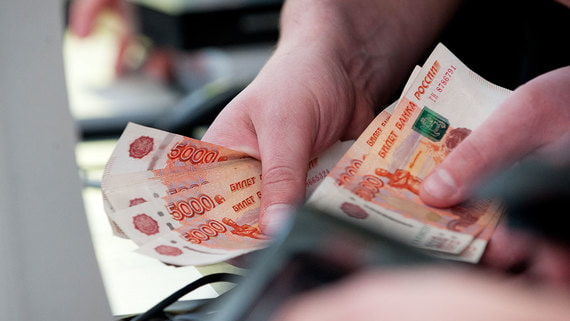Real incomes of the population will grow by 3.4% this year
[ad_1]

The Ministry of Economic Development has improved the forecast for the dynamics of real incomes of the population in 2023 from 1.6% in the September version of the forecast to 3.4%, a representative of the ministry told reporters. The estimate for real wages (excluding inflation) has also been adjusted upwards, from 2.6% to 5.4%.
In nominal terms, the Ministry of Economics expects wages to rise by 10.9% and incomes by 9.2%, the spokesman said. The share of the wage fund in GDP will increase from 21.5% in 2022 to 23.4% this year, and by 2026 it will reach 24%, the ministry noted.
As the head of the ministry Maxim Reshetnikov noted during the expanded board of the department, low unemployment and competition for personnel will contribute to wage growth. “Decisions of the president in the social sphere play a significant role in supporting the incomes of the population. These are targeted assistance to families with children, indexation of the minimum wage, living wage, pensions, social benefits and benefits,” the minister said.
Inflation (affecting the growth of real incomes and wages) will reach 5.3% at the end of this year, the minister said.
In 2024 and 2025 real incomes will grow by 2.6%, in 2027 – by 2.7%, a representative of the Ministry of Economics said. Real wages will increase by 2.8% in 2024-2025, by 2.5% in 2026, he added.
The average annual unemployment rate is projected to be at record low levels of 3.5% from 2023 to 2026.
The unemployment rate in February of this year fell to a record 3.5%, follows from the data of Rosstat. This is the lowest figure on record, the previous low was recorded in January 2023 (3.6%). According to the statistics agency, 2.6 million people were considered unemployed in February 2023.
Among the measures that will support income growth, including an increase in the allowance of military personnel, new monthly payments for families with children from 8 to 17 years old, the provision of assistance under the new housing allowance instrument in connection with the birth and upbringing of a child, indexation of PM, pensions non-working pensioners (by 10%) and the minimum wage is higher than inflation and average wage growth, the spokesman said.
In Russia, there is still an increased demand for workers, which will also lead to higher wages, he notes. At the same time, “it is impossible to say that we have a global labor shortage, these are local problems,” the representative explains. The profile authorities are taking measures to resolve this issue, the source added.
Earlier, Russian President Vladimir Putin said that this year the real wages of Russians on average should grow by 3-5%, and real disposable income – by 2-3%. The growth of the population’s income is “task number one” for the state, the President stressed. In 2022, nominal wages did not have time to grow at the same pace as inflation, which reached 17%, the head of state noted.
In February, Putin, during his message to the Federal Assembly, proposed an additional indexation of the minimum wage by 10% from January 1, 2024. Taking into account the already planned increase, the minimum wage will increase by 18.5% to 19,242 rubles, he noted.
According to Rosstat, last year the salaries of Russians in nominal terms increased by 12.6% to 64,191 rubles, in real terms (excluding inflation) they decreased by 1%. Real disposable income of the population (adjusted for inflation and excluding mandatory payments) decreased by 1%.
[ad_2]
Source link






